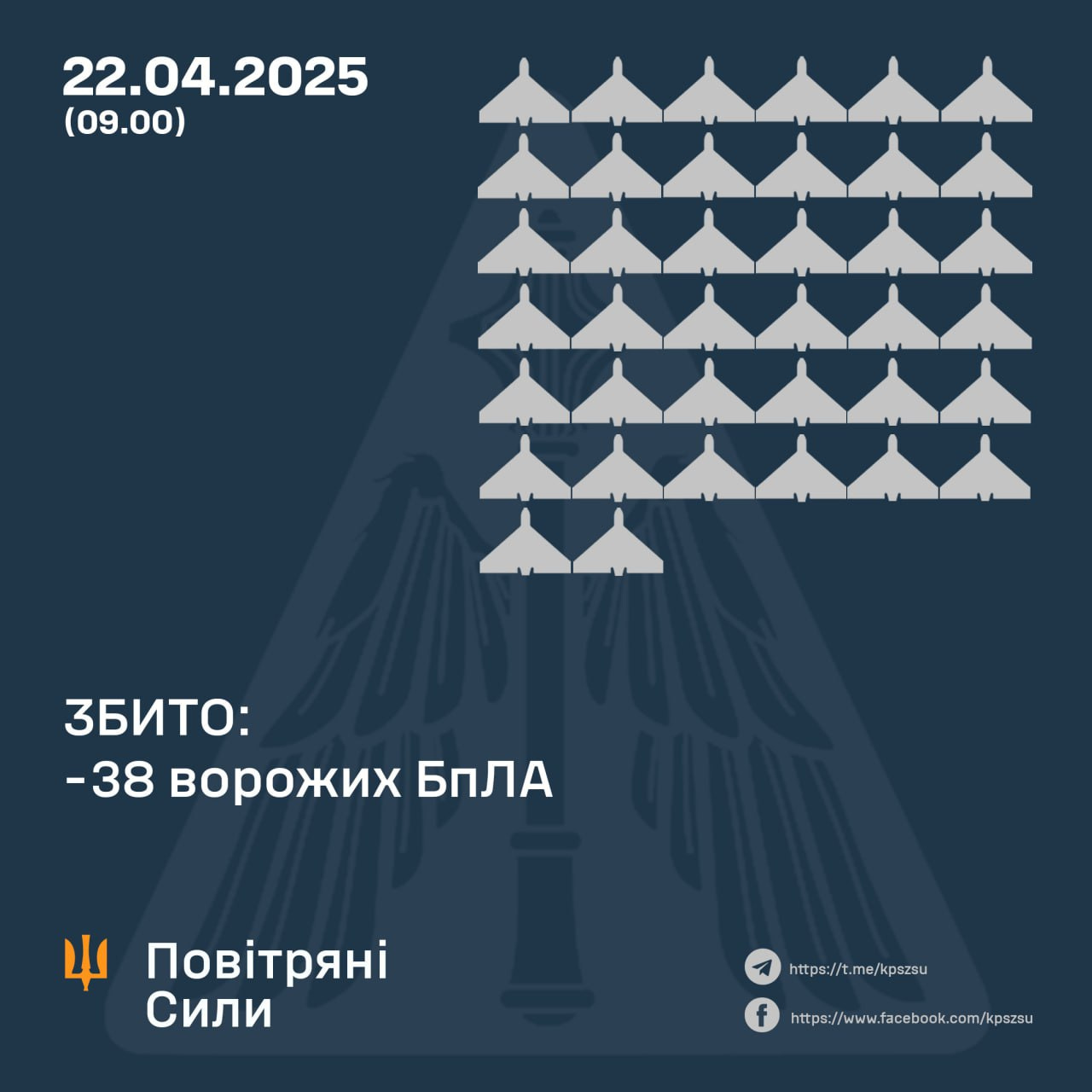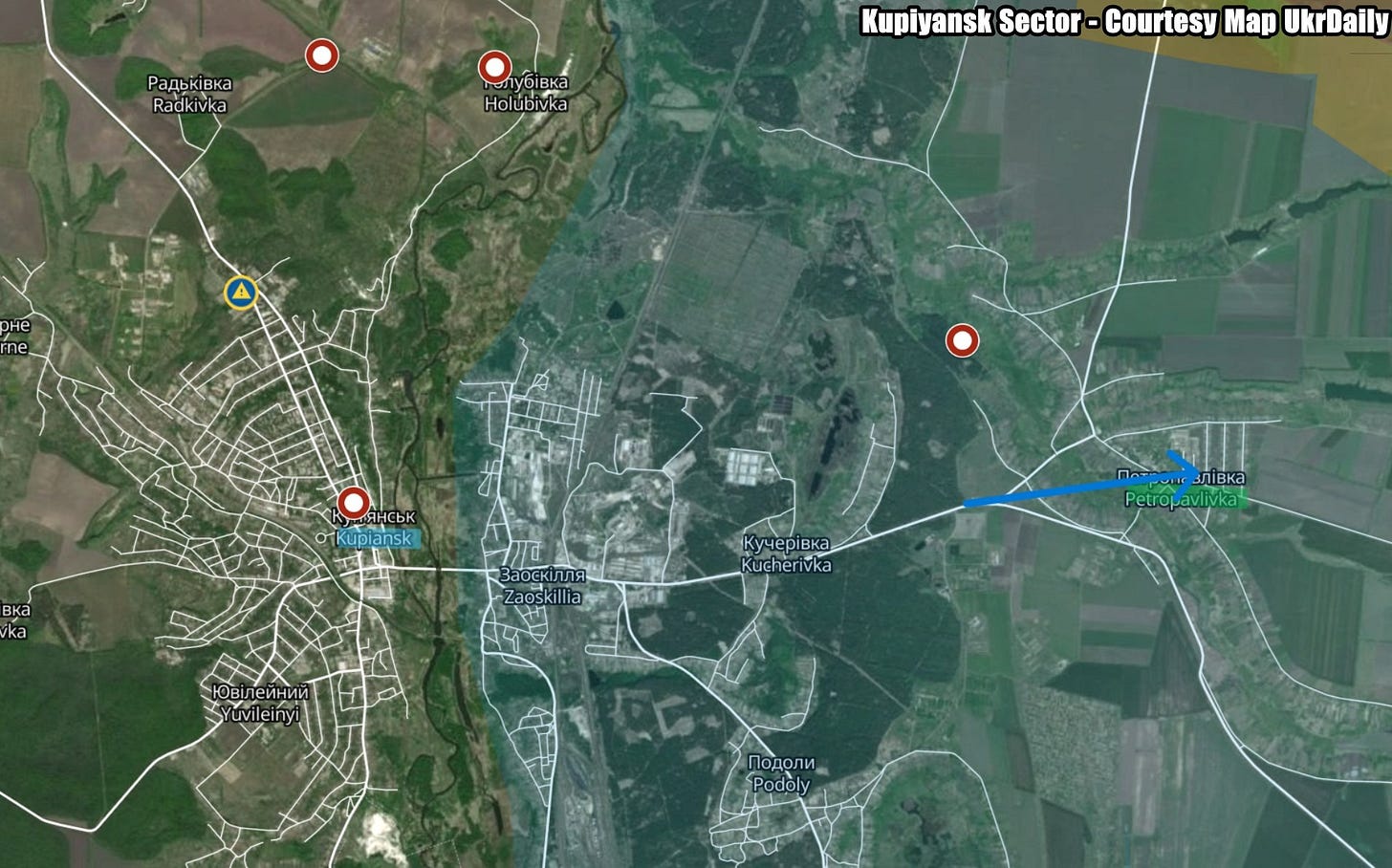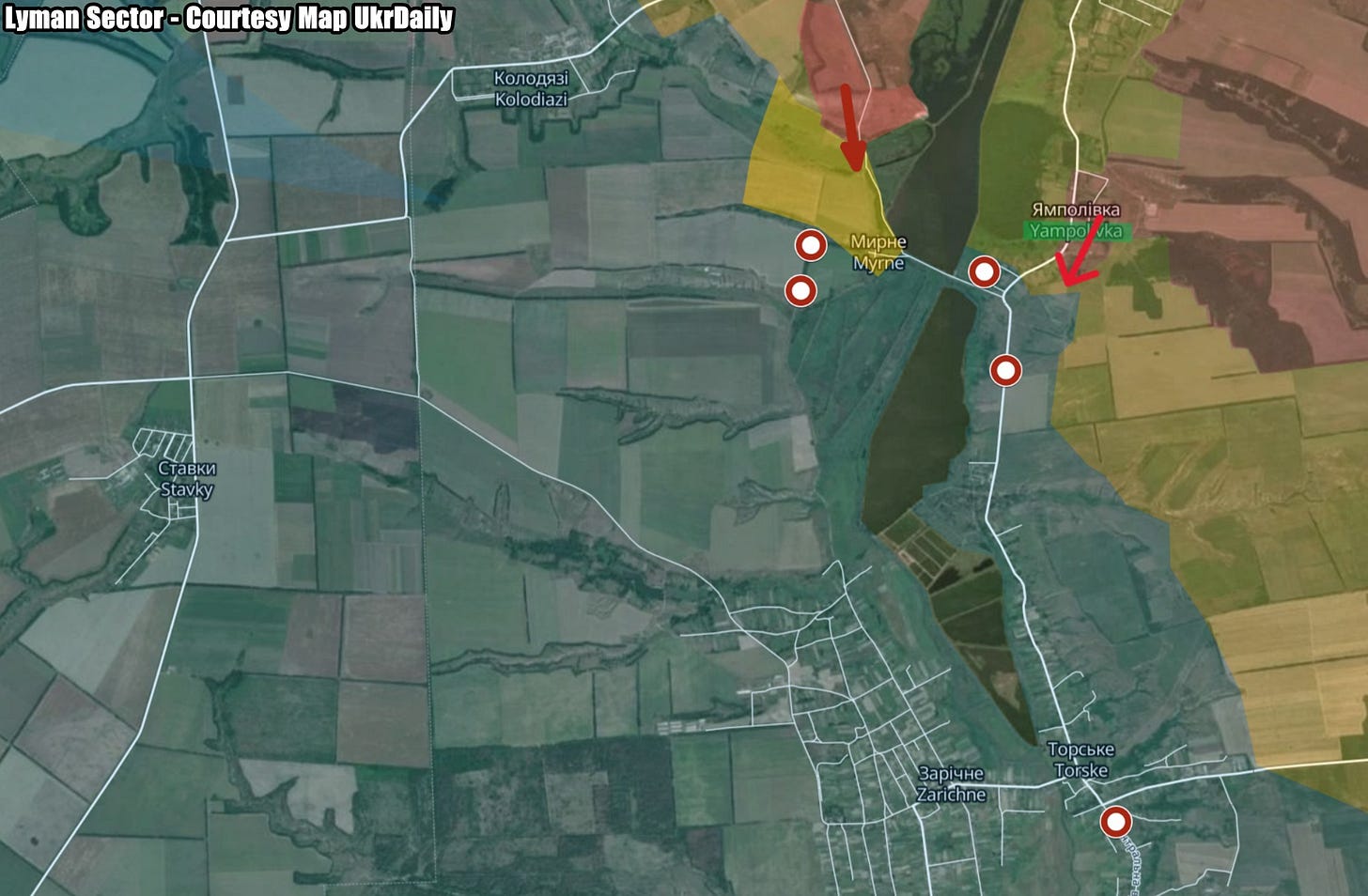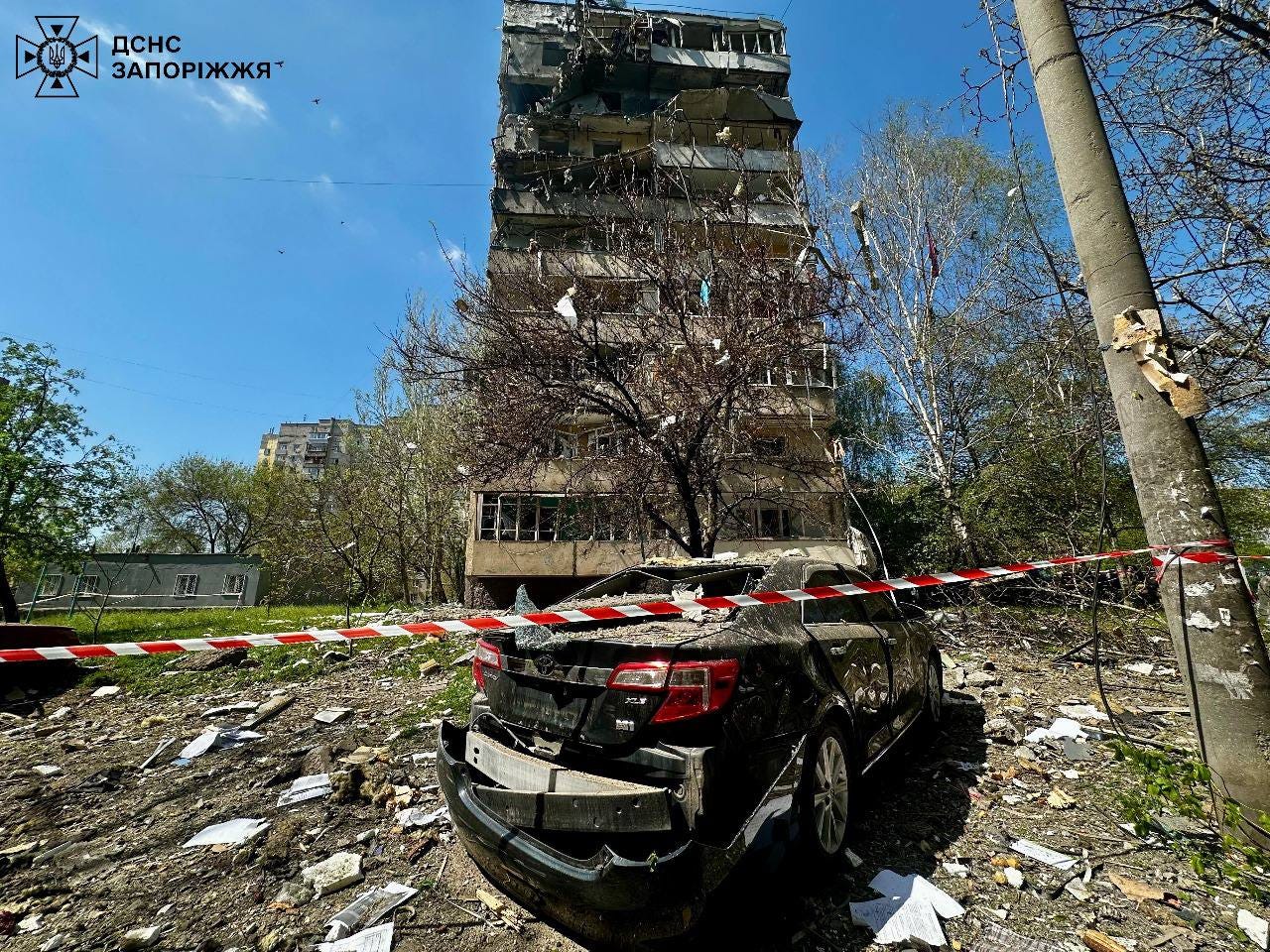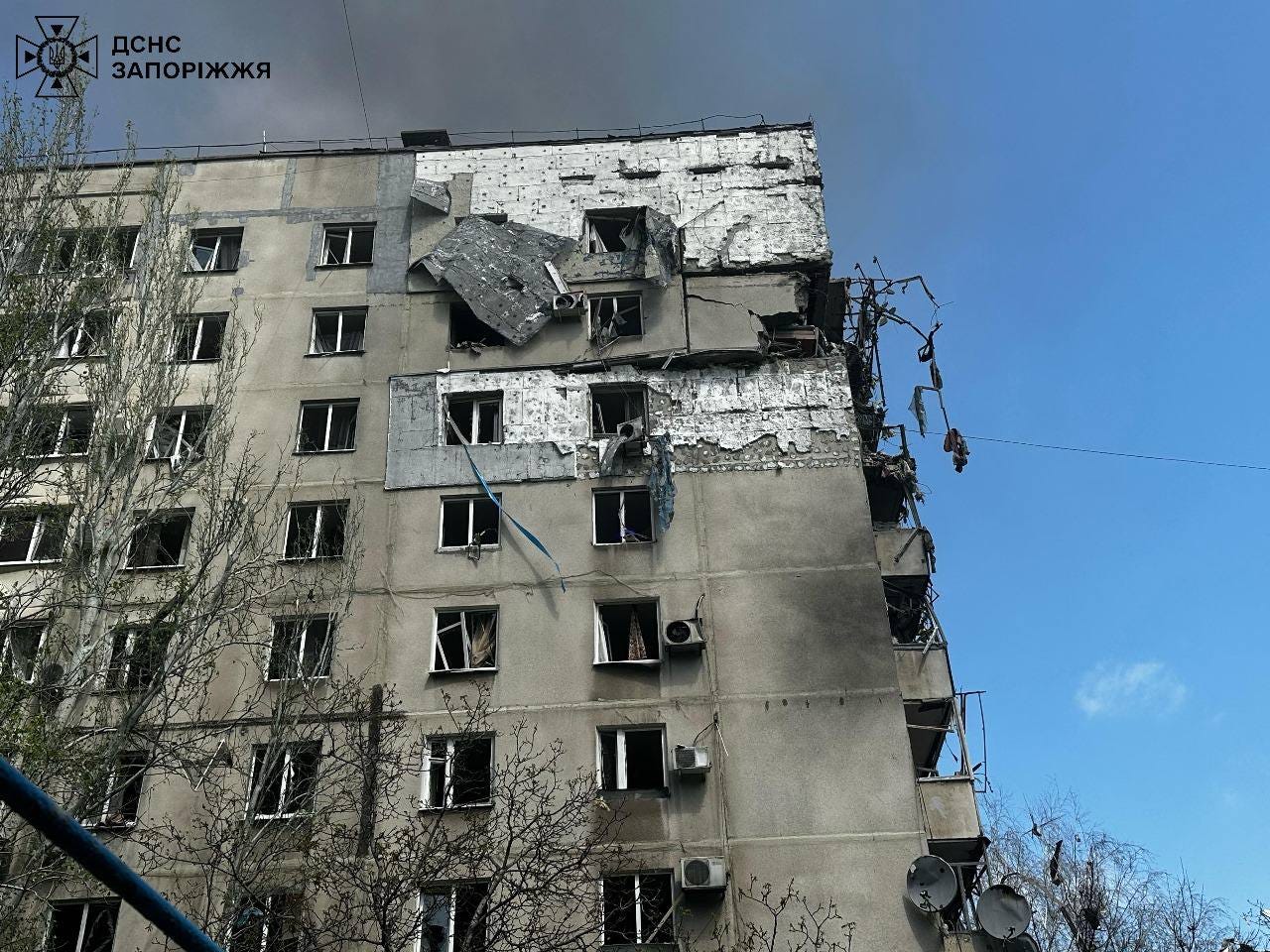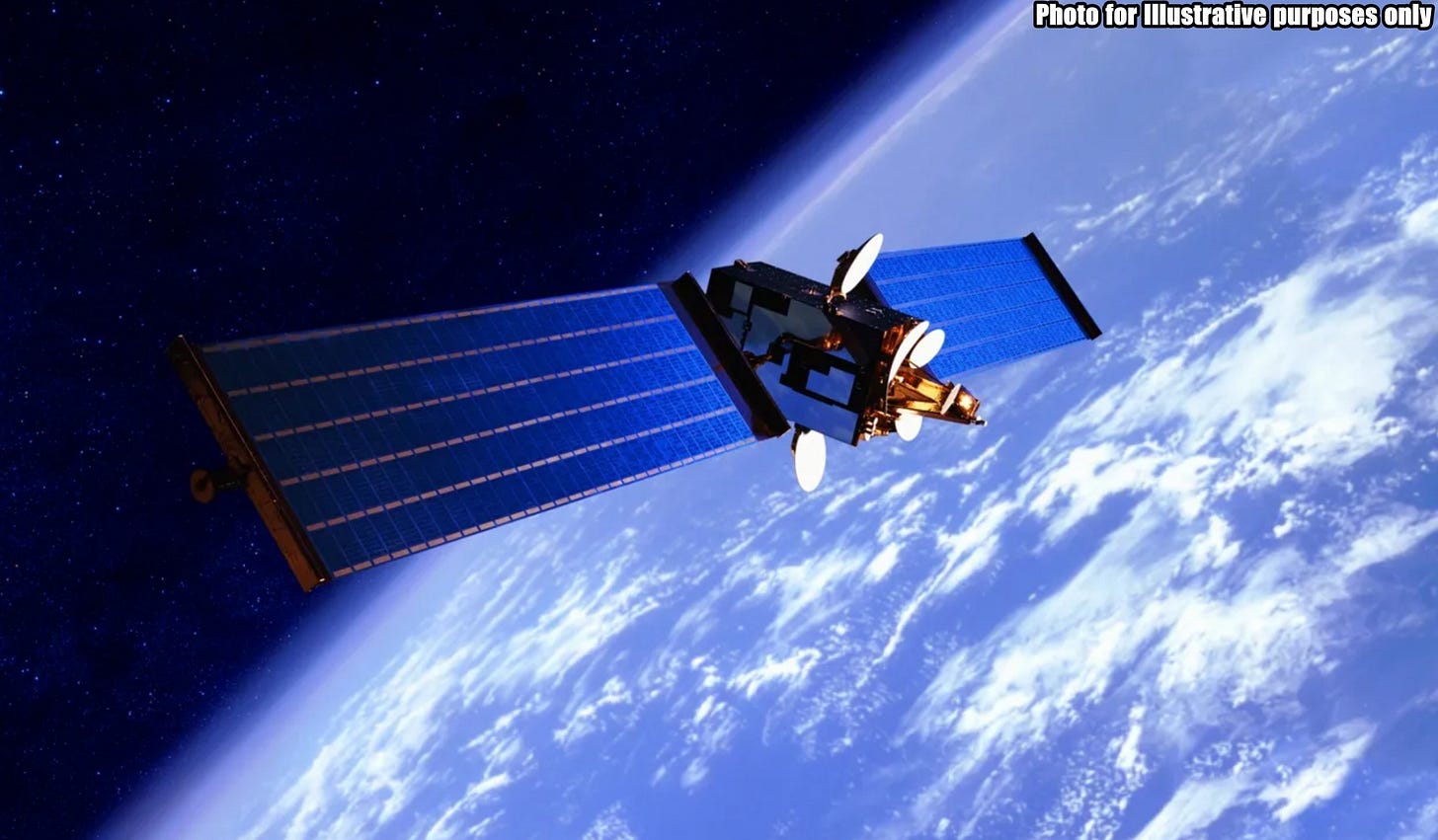Slava Ukraini! In early 2022 I began a Telegram channel aggregating news from a number of sources daily on the war in Ukraine. In June 2023 I began providing a daily draft for the Ukraine War Brief Podcast collecting news from over 70 sources daily, which formed the basis of the script. While the Podcast no longer exists I have continued to make this Brief available for my followers here on Substack for those who wish to keep up with the news from the war.
All the latest news on the Russo-Ukraine War 6 days per week
ALONG THE CONTACT LINE
GSAFU Morning Report
For: Apr 22, 2025
The General Staff of the Armed Forces of Ukraine in its Operational Information update at 08:00 on Apr 21 stated that day 1154 of the full-scale invasion of the Russian Federation against Ukraine had begun.
The situation on the line of combat remains tense in some sectors. Ukrainian defenders continue to actively counteract the Russian aggressor, causing them significant losses in personnel, equipment and technology. Exhausting the enemy along the entire front line and continuing to disrupt the plans of Russian occupiers to advance deeper into the territory of Ukraine.
During the past day, 165 combat engagements took place.
Over the past 24 hours, the enemy carried out 1 missile strike,137 air strikes, used 2,651 drones and fired approximately 5,800 artillery shells across the positions of Ukrainian forces and civilians.
Air Force Daily Report
38 ENEMY UAVS SHOT DOWN, 16 SIMULATOR UAVS FAILED TO REACH THEIR TARGETS (LOCATIONALLY LOST)
➖➖➖➖➖➖➖➖➖
On the night of Apr 22, 2025 (21:00 Apr 21), the enemy attacked with 54 strike UAVs (simulator drones of other types) - launch areas: Millerovo, Kursk, Bryansk, Primorsko-Akhtarsk - Russian Federation, Chauda - Crimea.
The enemy air attack was repelled by aviation, anti-aircraft missile units, electronic warfare equipment, and mobile fire groups of the Defense Forces of Ukraine.
As of 09:00, it has been confirmed that 38 Shahed attack UAVs (and other types of drones) have been shot down in the east, north, south, and center of the country.
16 enemy drone simulators were lost in location (without negative consequences).
As a result of the enemy attack, the Odessa and Kyiv regions suffered.
A new wave of Russian attacks began at 8:00 AM! Groups of strike UAVs are entering from the north through the Sumy region. Respond to the air alert!
Combat Operations in the Russian Federation
The Institute for the Study of War (ISW), a US based think tank, in its Apr 21 Russian Offensive Campaign Assessment reported that:
Kursk Salient: Fighting continued in border areas of Kursk Oblast on Apr 21, and Russian sources accused Ukrainian forces of violating the Easter truce on Apr 20.
Belgorod Incursion: Fighting continued in northwesternmost Belgorod Oblast on Apr 21, and a Russian source accused Ukrainian forces of violating the Easter truce on Apr 20.
The Khortytsia operational-strategic group
(Responsible for the northeastern part of Ukraine. )
Kupyansk Sector: Ukrainian sources accused Russian forces of violating the Easter truce in the Kupyansk direction on April 20 amid continued fighting in the area on Apr 21.
A Russian milblogger claimed that Ukrainian forces occupy northwestern Petropavlivka (east of Kupyansk), but this advance likely did not occur within the last 24 hours.
Lyman Sector: Russian forces recently advanced near Lyman as Ukrainian and Russian sources accused each other of violating the Easter truce in the Lyman direction on Apr 20.
Geolocated footage published on Apr 21 indicates that Russian forces recently advanced southeast of Yampolivka (northeast of Lyman).
Toretsk Sector: Russian forces recently advanced in the Toretsk direction as both Ukrainian and Russian sources accused each other of violating the Easter truce on Apr 20.
Geolocated footage published on Apr 19 and 21 indicates that Russian forces recently advanced into the southwestern outskirts of Toretsk and eastern Dachne (north of Toretsk), respectively.
The Tavria operational-strategic group
(Responsible for the central-eastern and southeastern part of Ukraine.)
Ukrainian sources accused Russian forces of violating the Easter truce in the Tavria direction on April 20 amid continued fighting in the area on Apr 21. There have been no major changes to the combat environment since our last report.
The Odesa operational-strategic group
(Responsible for Kherson, Qırım, (also known as Crimea) and the Black Sea.)
There have been no major changes to the combat environment since our last report.
TEMPORARILY OCCUPIED TERRITORIES
Nothing major to report.
THE HOME FRONT
Russian drone attack injures three people in Ukraine's Odesa.
Russian forces launched a mass overnight drone attack on Ukraine's Black Sea port city of Odesa, wounding three people and damaging many apartments, Reuters reported citing local officials early on Tuesday.
"The enemy targeted a residential area in a densely populated district of Odesa," Mayor Hennadiy Trukhanov wrote on the Telegram messaging app, sharing pictures of a fire blazing and apartment buildings with windows smashed and facades damaged.
Governor Oleh Kiper said that three people were injured in the attack and were receiving medical help.
The Ukrainian air force said on Tuesday that Russia launched 54 drones in an attack overnight, of which 38 were shot down and 16 did not reach their targets, likely due to electronic warfare countermeasures.
Kiper said the attack on Odesa damaged dwellings, civilian infrastructure, an educational institution and vehicles. Videos shared by the emergency services showed crews putting out a large fire in one of the damaged buildings.
Odesa, with its three ports, has been a frequent target of Russian attacks in the more than three-year-old war with Russia.
Russia launches drone attack on Kherson, Kharkiv; casualties reported.
Russian forces launched drones at the Ukrainian cities of Kherson and Kharkiv on Apr 22, injuring civilians even as Kyiv awaits Moscow's response to a proposed halt on strikes against civilian infrastructure, the Kyiv Independent reports.
A Russian drone attack on a funeral procession in the Kherson city center around noon injured six people and damaged a hospital, local authorities said.
The victims included four funeral service employees. Two of them have been hospitalized, according to the statement. The victims also included two hospital staff members.
The hospital building and service vehicles were damaged.
The attack on the southern city took place shortly before massive drone strikes against Kharkiv, which have so far injured seven people. Four municipal districts were targeted in the attack that lasted less than an hour.
Russian forces also launched an airstrike against Zaporizhzhia, reportedly killing one person and injuring 23, including four children.
In the front-line Kharkiv Oblast town of Kupiansk, a Russian airstrike injured seven people, Governor Oleh Syniehubov reported. Fifty-five houses were damaged.
Russian strikes against Ukrainian cities come as Kyiv offered a 30-day pause on strikes against civilian areas. Moscow signalled it would take the proposal under consideration, but continued in its strikes.
Russian President Vladimir Putin also declared a temporary truce over the Easter holidays, even as Kyiv accused Moscow of nearly 3,000 violations during that period.
Moscow previously rejected a full 30-day truce agreed upon by Kyiv and Washington on March 11 in Jeddah.
RUSSIAN WORLD
The Kremlin Hopes to Bait Trump Into a Grand Bargain.
As Moscow prepares for possible negotiations with Washington aimed at ending its full-scale invasion of Ukraine, it is seeking a far more ambitious outcome than a mere ceasefire: a global reordering of spheres of influence, the Moscow Times reports.
In the Kremlin’s view, such an agreement would effectively mean U.S. recognition of Russian dominance in the post-Soviet space — including Ukraine — and, to some extent, an acknowledgment of its influence in Europe.
To secure that goal, the Kremlin is now scouring for incentives it believes can catch and hold President Donald Trump’s attention, ranging from rare earths deals and geopolitical leverage in Iran and North Korea to a long-dreamed-of Trump Tower in Moscow.
Five current Russian government officials, including two diplomats, three sources close to the Kremlin and employees of three major state-owned companies confirmed this to The Moscow Times, all speaking on condition of anonymity due to the sensitivity of the matter.
“The main thing is that they [the Americans] don't interfere in our affairs and don't tell us how to live,” said a senior Russian official familiar with the Kremlin’s negotiating logic. “That they don’t hinder us in doing what we are doing.”
Still, officials acknowledge that the era of major summits like those during the Cold War or the early post-Soviet years is over.
“It’s hard to count on that now,” the government official said.
The Kremlin, recognizing the limitations of its negotiating position, has tasked officials and experts with analyzing and identifying all possible incentives that could grab Trump’s interest and keep the talks from narrowing to a limited agenda.
Following Trump’s election victory in November, the Kremlin ordered major corporations to prepare detailed proposals for economic cooperation with Washington.
“We need to milk Trump as much as possible, dangling the possibility of a ceasefire like a carrot before him,” one participant in the discussions said.
There is little illusion about the fragility of this opportunity. “The window may slam shut. Trump could lose interest or, worse, bear a grudge,” diplomats and officials who spoke to The Moscow Times agreed.
Many ideas have been floated as possible incentives to lure Trump into a deal, from mediating U.S.-China negotiations to joint missions to Mars. But the Kremlin has few real trump cards.
Economic proposals look weak. Even in their best years, U.S.-Russia trade barely reached $45 billion. In 2024, it plunged to just $3.5 billion, its lowest level since 1992.
Today, Moscow can offer only a few commodities the U.S. still needs: titanium for aircraft manufacturing, uranium for nuclear energy and heavy crude oil for refineries along the Gulf Coast. But as one official put it, these “won’t save the American trade balance, and thus have no value for Trump.”
Across all of these proposals, the Kremlin is guided by a single axiom: initiatives must be personally tailored to Trump, achievable within a single term and offer strong media appeal.
RELATED INTERNATIONAL NEWS
Russia is ramping up hybrid attacks against Europe.
Russia is increasing its hybrid attacks aimed at undermining society in the Netherlands and its European allies, and Russian hackers have already targeted the Dutch public service, Dutch military intelligence agency MIVD said on Tuesday, Reuters reports.
"We see the Russian threat against Europe is increasing, including after a possible end to the war against Ukraine," MIVD director Peter Reesink said in the agency's annual report.
"In the Netherlands, we saw the first (Russian) cyber sabotage act against a public service, with the aim of gaining control of the system. It was thwarted, but it was the first time." The MIVD did not specify what public service had been targeted.
The agency also found a Russian cyber operation against critical infrastructure in the Netherlands, possibly as preparation for sabotage, the report said.
Western countries have in recent years said hybrid threats by Russia and China were becoming increasingly more aggressive.
Such threats could include everything from physical sabotage of critical infrastructure to disinformation campaigns, espionage and cyber attacks in a bid to influence or undermine society, the agency said.
It repeated its warnings of Russian entities mapping infrastructure in the North Sea for espionage, and acts of sabotage aimed at internet cables, water and energy supplies.
Britain's foreign spy chief accused Russia in November of a "staggeringly reckless campaign" of sabotage in Europe, ranging from repeated cyber attacks to arson.
Moscow has denied responsibility for all such incidents.
Reesink reinforced the message shared by European allies that the military needed to be scaled up.
"If you look at the speed at which Russia is increasing its military complex, its equipment, its artillery, it's by far much faster than we do in Europe, even in the U.S. So that creates a sort of window of vulnerability for us," he said.
Europe outlined non-negotiable issues to US for Ukraine-Russia peace deal.
European powers told the United States last week which aspects of a potential peace deal between Ukraine and Russia would be non-negotiable for them, ahead of a new round of discussions on Wednesday, Reuters reported on Apr 22 citing France's Foreign Minister Jean-Noel Barrot.
Ukraine, the U.S., France, Britain and Germany held their first joint talks since President Donald Trump came to power on Thursday in Paris, sharing their views on ways to end the more than three-year-old war.
Senior officials, including U.S. Secretary of State Marco Rubio, will meet again in London on Wednesday.
"The only objective that concerns us is to defend French interests and European security. It's the reason that as the US decide to place itself in a mediator position that we make them hear what our "red lines" are," Barrot told franceinfo radio on Tuesday, referring to issues that the European leaders would not budge on. He did not elaborate.
Asked whether he thought that Trump's assertion that a peace deal could be announced this week was credible, Barrot said it depended on Russian President Vladimir Putin.
"I think that the (Easter) truce which he (Putin) decreed somewhat surprisingly was a marketing operation, a seduction operation aimed at avoiding that President Trump gets impatient," Barrot said.
Despite repeated violations of the truce, he said there had at least been a drop in intensity regarding drones and long-range missiles, which could perhaps open the door for a further truce.
MILITARY & TECH
Japan to provide Ukraine with geospatial intelligence.
Japan's Kyushu University Institute for Q-shu Pioneers of Space (iQPS) has agreed to provide Ukraine's military intelligence agency (HUR) with synthetic aperture radar (SAR) imagery, Intelligence Online magazine reported on April 21.
Japanese and Ukrainian authorities reportedly began discussing possible support in February, with the talks gaining urgency after the U.S. temporarily paused intelligence assistance for Kyiv in early March.
iQPS, which plans to launch its seventh SAR observation satellite by late 2026, agreed with Kyiv on a timeline of two to three months to install relevant software onto Ukrainian intelligence's platforms, the magazine wrote.
SAR technology, which can recreate two-dimensional or three-dimensional images of landscapes or objects, has broad military applications. It can help track enemy movement and installations regardless of weather conditions.
Ukraine receives intelligence support from other partners, including France and the U.K.. Nevertheless, the U.S.-imposed pause underscored its critical role in military planning, namely in launching long-range strikes and intercepting Russian aerial attacks.
Washington claimed its halt on intelligence support, which coincided with the freezing of arms supplies, extended only to offensive operations. While the U.S. resumed the assistance after progress in ceasefire talks, the move ramped up concerns about further cuts in the future.
Ukraine's military heavily relies on Starlink, a communications system owned by Elon Musk, U.S. President Donald Trump's close ally and critic of military aid to Kyiv. French satellite operator Eutelsat pledged to scale up its operations in Ukraine but said it could not currently replace the 50,000 Starlink terminals operating in the country.
IT Coalition Transfers Equipment Worth Nearly €2M to Ukraine.
Ukraine’s Armed Forces have received a new shipment of advanced communications equipment worth nearly €2 million, supplied by Luxembourg and Iceland under the IT Coalition framework, Defense Express reports.
The delivery aims to reinforce secure digital infrastructure and operational effectiveness along the front line.
The aid package, coordinated by Ukraine’s Ministry of Defence, includes:
3,288 access points
500 routers
460 solar-powered charging stations
872 mobile phones
These tools are intended to ensure stable, high-quality communications between frontline units and command structures – an increasingly decisive factor on the modern battlefield.
"I thank the nations of the IT Coalition for their consistent support. This equipment will strengthen the resilience of our military’s communications infrastructure, which is vital for coordination and control on the contact line," said Kateryna Chernohorenko, Deputy Minister of Defence for Digital Development.
This marks the third delivery by the IT Coalition in 2025. The first, in January, brought equipment valued at €3.3 million from Estonia, the Netherlands, and Luxembourg. A second tranche followed in February, valued at €7.5 million.
The IT Coalition operates within the Ukraine Defense Contact Group (Ramstein format) and focuses on providing Ukraine with capabilities in information technology, communications, and cybersecurity.
The coalition currently includes Belgium, Denmark, Ireland, Iceland, Spain, Italy, Canada, Latvia, Lithuania, the Netherlands, Germany, the United Kingdom, Finland, Sweden, and Japan. Estonia and Luxembourg serve as its leading contributors.
That’s it for today’s Brief folks if you would like to keep up with events in Ukraine daily please consider subscribing, it’s free!








